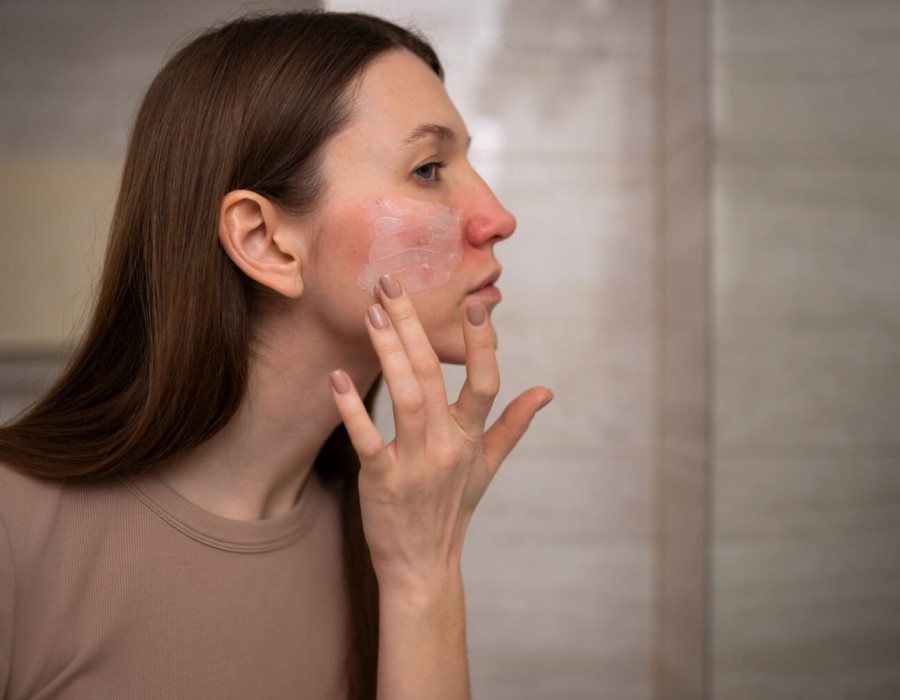Medical laser treatments offer a cutting-edge solution for managing Rosacea Treatment in Dubai, particularly for reducing redness and visible blood vessels. This article delves into the benefits, procedures, and outcomes of medical laser treatments for rosacea.
UNDERSTANDING MEDICAL LASER TREATMENTS
Medical laser treatments utilize focused light energy to target specific skin issues associated with rosacea, such as redness and visible blood vessels.
HOW LASER THERAPY WORKS
Laser therapy works by directing concentrated light energy to the skin, where it is absorbed by blood vessels or pigment. This process helps to diminish redness and improve overall skin appearance.
- SELECTIVE PHOTOTHERMOLYSIS: This technique involves targeting specific structures in the skin, such as blood vessels, without affecting the surrounding tissue. The absorbed light energy causes the targeted blood vessels to coagulate and break down.
TYPES OF MEDICAL LASER TREATMENTS
Several types of lasers are used for treating rosacea, each with unique advantages.
- Pulsed Dye Laser (PDL): PDL targets hemoglobin in blood vessels, making it effective for treating visible blood vessels and diffuse redness.
- Intense Pulsed Light (IPL): IPL uses a broad spectrum of light to target redness and improve skin tone. It is versatile and effective for overall rosacea management.
- KTP Laser: The KTP laser is designed for targeting small blood vessels and reducing superficial redness.
BENEFITS OF MEDICAL LASER TREATMENTS
Medical laser treatments offer several key benefits for managing rosacea.
REDUCTION IN REDNESS AND BLOOD VESSELS
Laser treatments effectively reduce redness and diminish the appearance of visible blood vessels, leading to a more even skin tone and reduced discomfort.
MINIMAL INVASIVENESS
Medical lasers offer a minimally invasive approach to treating rosacea, with most procedures involving minimal discomfort and downtime. Patients can usually return to their daily activities shortly after treatment.
IMPROVED SKIN TEXTURE
In addition to reducing redness, laser treatments can stimulate collagen production, improving skin texture and overall appearance.
PROCEDURE DETAILS AND EXPECTATIONS
Understanding what to expect during and after a laser treatment can help patients prepare and set realistic expectations.
TREATMENT PROCESS
Before the procedure, a topical numbing cream may be applied to minimize discomfort. The laser device is then used to target the affected areas. The treatment typically lasts 30 minutes to an hour, depending on the extent of the area being treated.
AFTERCARE AND RECOVERY
Post-treatment, patients may experience temporary redness, swelling, or minor discomfort. These effects usually resolve within a few days. It’s important to follow aftercare instructions provided by your dermatologist, including avoiding sun exposure and using gentle skincare products.
CONSIDERATIONS AND LIMITATIONS
It is important to consider the following factors before undergoing medical laser treatments for rosacea.
CANDIDACY AND EXPECTATIONS
Not all individuals with rosacea may be suitable candidates for laser treatments. Factors such as skin type and the severity of rosacea should be evaluated by a dermatologist. Setting realistic expectations is crucial, as multiple sessions may be required to achieve optimal results.
POTENTIAL SIDE EFFECTS
While laser treatments are generally safe, potential side effects include temporary redness, swelling, and changes in pigmentation. Discussing these risks with a dermatologist ensures informed decision-making and proper management.
CONCLUSION
Medical laser treatments offer an effective solution for managing rosacea by reducing redness and visible blood vessels. With minimal invasiveness and significant benefits, laser therapy can improve skin appearance and comfort. Consulting with a dermatologist to determine candidacy, setting realistic expectations, and following aftercare instructions contribute to successful rosacea management through laser treatments.





Comments